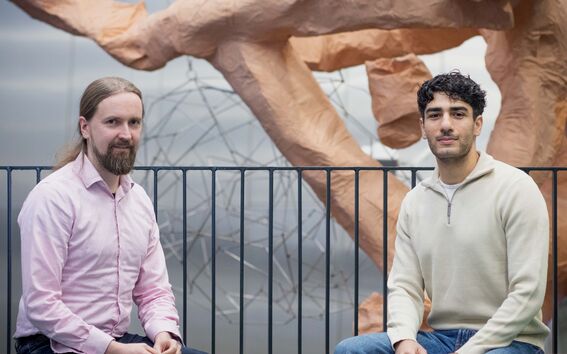Five things everyone should know about political polarisation
Divisions around the world are deepening, and research shows that also in Finland public debate has become more fragmented than before

Political systems become polarised when internal unity within groups strengthens and the divide between them deepens. As polarisation intensifies, societal tensions can grow, making it difficult to find compromises. The intensity of polarisation has been measured in research, but until now its structural roots in social media have remained obscure.
Now, researchers from Aalto University have used network theory to develop a method for measuring the impact of individuals on societal division. While the method can be applied to any case around which social media data can be gathered, the initial study utilised Twitter data collected before Finland’s 2019 and 2023 parliamentary elections. The results reveal how a relatively small elite can have a disproportionately large influence on shaping polarizing environments.
‘We know that size, or the activity level of a group or groups, don’t necessarily correlate with how divided society is on a particular issue,’ explains network scientist Ali Salloum, a doctoral researcher, and lead author of the study. ‘The method we came up with identifies the elite and the mass entirely through an algorithm –– quantifying how much each contributes to the overall divide.’
The team analysed 12 weeks of Twitter (now X) data preceding both elections, as the platform offers one of the clearest views into Finland’s digital polarisation dynamics. Based on core-periphery theory, hierarchical groups were identified, with participants classified algorithmically as elite or mass. Established community detection techniques were then used to map the location of elites on the political spectrum.
‘Not all thought leaders –– the so-called elite –– are politicians. But even without knowing exactly who they are, we can infer their status from the network’s structure. You don’t end up at the centre by accident,’ Salloum says.
According to the researchers, an elite cluster may include only a few hundred individuals, yet account for a striking share of overall polarisation. The study, recently published in Network Science, is the first to demonstrate this imbalance quantitatively.
Another key finding is that the algorithmically identified elite has become increasingly aligned in its views. Alignment refers to the likelihood that a person’s stance on one issue correlates with their opinions on other topics –– for example, in matters of climate or immigration policy.
‘In democracies, it’s healthy –– even desirable –– to disagree sharply on individual issues. But when alignment becomes complete, society splits into just two camps that disagree on absolutely everything –– there’s nothing left in common with the other side,’ says Mikko Kivelä, Professor of Computer Science at Aalto University and co-author of the study.
When hatred and suspicion towards those with different worldviews overshadow the importance of the best argument in political issues, or when interactions between people from different backgrounds dwindle, societal, and even individual well-being can significantly regress.
In the Finnish case study, it was revealed that by 2023 alignment had almost reached its zenith among elites. For example, a progressive stance on climate almost certainly meant a correspondingly progressive view on immigration, and vice versa, while conservative social views almost always paired with conservative opinions on economics. In other words, over four years, thought-leaders had become intractably siloed –– a red flag for a functioning democracy.
‘One of the most serious consequences of polarisation and alignment –– beyond the threat of political violence –– is political gridlock. Legislation slows down and weakens, poor-quality decisions are made, or no decisions are made at all,’ says Salloum.
Unfortunately, polarisation data can no longer be studied through X, as owner Elon Musk has restricted researchers’ access to user data. Despite this, the researchers hope to apply the method to other nations and contexts.
‘I have no reason not to assume this is a global phenomenon,’ says Salloum, for whom the next step is to study US and European data from Bluesky. However, ongoing research depends on having access to data, a point that frustrates Salloum.
‘We have seen for decades how important ‘information influence’ data like this is. It gives huge insights into mis- and dis-information, and the state of our democracies generally. Yet, one of the biggest platforms shuts down its APIs and suddenly there’s no access,’ he says.
‘It’s especially frustrating when we already know what’s inside the black box, and the value of all that data that the platforms control. By law, researchers should have access, but it’s not being followed. In my opinion, we don’t have enough political pressure directed at keeping these platforms transparent and open,’ he concludes.

Divisions around the world are deepening, and research shows that also in Finland public debate has become more fragmented than before



